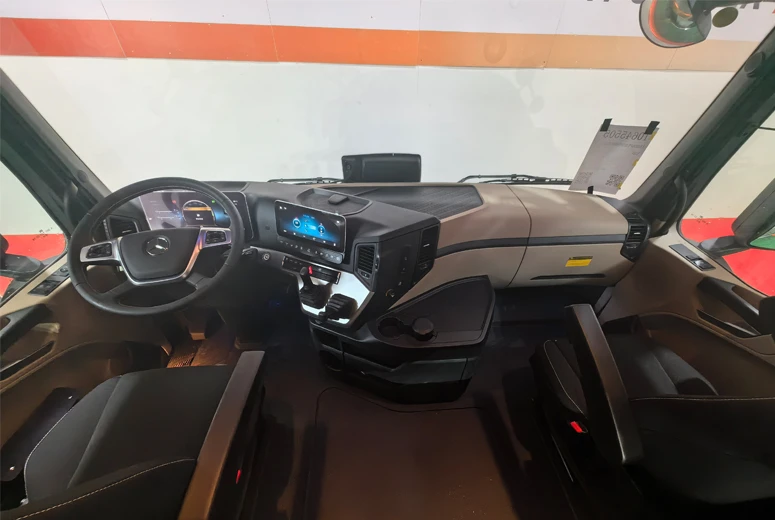types of chassis
Understanding the Different Types of Chassis
The chassis of a vehicle is its backbone; it provides the structure and support necessary for the components of a vehicle, including the engine, transmission, suspension, and body. Depending on the design and application, chassis can be categorized into various types, and understanding these can help in the comprehension of automotive engineering and design. This article will explore the primary types of chassis, highlighting their features, advantages, and typical applications.
1. Body-on-Frame Chassis
The body-on-frame chassis is a traditional design widely used in trucks and SUVs. In this configuration, the vehicle’s body is mounted on a separate frame, usually constructed from steel. The frame provides strength and durability, making it ideal for vehicles that carry heavy loads or endure rough terrains.
Advantages - Strength and Durability The separate frame can support the weight of heavy cargo and withstand rough usage. - Ease of Repair Damage to the body can often be repaired without affecting the frame, allowing for easier repairs and replacements.
Applications Commonly found in pickup trucks and larger SUVs, body-on-frame chassis are favored for their utility and robustness.
2. Monocoque Chassis
Monocoque, or unitary construction, is a modern design where the vehicle's body and chassis are integrated into a single structure. This design uses the strength of the chassis to provide structural integrity, leading to lighter vehicles with better fuel efficiency.
Advantages - Weight Efficiency By combining the body and chassis, manufacturers can create lighter vehicles without sacrificing strength. - Improved Aerodynamics Monocoque designs often result in a lower center of gravity and better aerodynamic profiles.
Applications This type of chassis is prevalent in passenger cars and sports cars, where performance and fuel efficiency are priorities
.3. Space Frame Chassis
The space frame chassis utilizes a skeleton-like structure, typically made from lightweight materials such as aluminum or carbon fiber. The design consists of triangulated components that create a rigid framework, making it beneficial for performance and safety.
types of chassis

Advantages - High Strength-to-Weight Ratio Space frames can provide remarkable strength while keeping the overall weight low. - Enhanced Safety The construction allows for the effective distribution of crash forces, improving safety for passengers.
Applications Space frames are commonly used in high-performance vehicles and race cars, where weight and structural integrity are critical.
4. Platform Chassis
The platform chassis is a versatile design that allows manufacturers to build multiple models on the same basic framework. This approach streamlines production and reduces costs while maintaining customization options for different vehicle types.
Advantages - Cost Efficiency Shared components reduce manufacturing costs and time. - Flexibility Different body styles, from sedans to SUVs, can be built on the same platform, enabling manufacturers to diversify their offerings.
Applications Auto manufacturers like Volkswagen and Toyota employ platform chassis designs for many of their vehicle models across various segments.
5. Skid Plate Chassis
Often found in off-road vehicles and certain types of racing vehicles, the skid plate chassis emphasizes protection against rough terrain. The chassis is designed with a protective undercarriage to safeguard vital components from damage.
Advantages - Protection The skid plate keeps the vital parts of the vehicle safe from rocks, water, and other obstacles. - Off-Road Capability It enhances the vehicle’s ability to navigate harsh environments.
Applications Typically used in off-road vehicles, rock crawlers, and some specialized racing vehicles focused on durability and protection.
Conclusion
Understanding the various types of chassis is essential for anyone interested in automotive engineering or the vehicle industry. Each type serves distinct purposes, catering to different vehicle requirements, from heavy-duty trucks to lightweight sports cars. The choice of chassis design directly impacts a vehicle's performance, safety, and overall driving experience. As technology continues to advance, the evolution of chassis design will likely play a crucial role in the future of automotive engineering, blending performance with efficiency and safety.
-
SINOTRUK HOWO 84 Electric Dump Truck for Eco-Friendly Heavy HaulingNewsJul.26,2025
-
The Fast 16-Gear Manual Transmission Assembly for Heavy TrucksNewsJul.25,2025
-
Mercedes Benz Actros 1848 42 Tractor Truck for Sale - Reliable PerformanceNewsJul.24,2025
-
High-Quality Water Pump Assembly for Sinotruk Trucks – Durable & ReliableNewsJul.23,2025
-
Premium Truck Engine Antifreeze Coolant Fluid for Heavy Duty VehiclesNewsJul.22,2025
-
FOTON View G7 Mini Bus: Affordable & Spacious TransportNewsJul.22,2025
Popular products

























